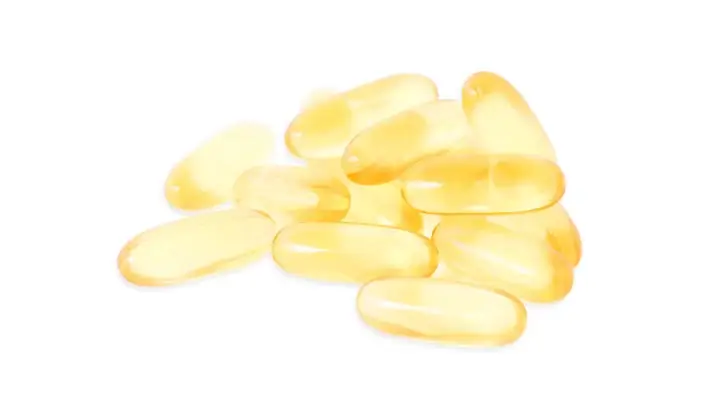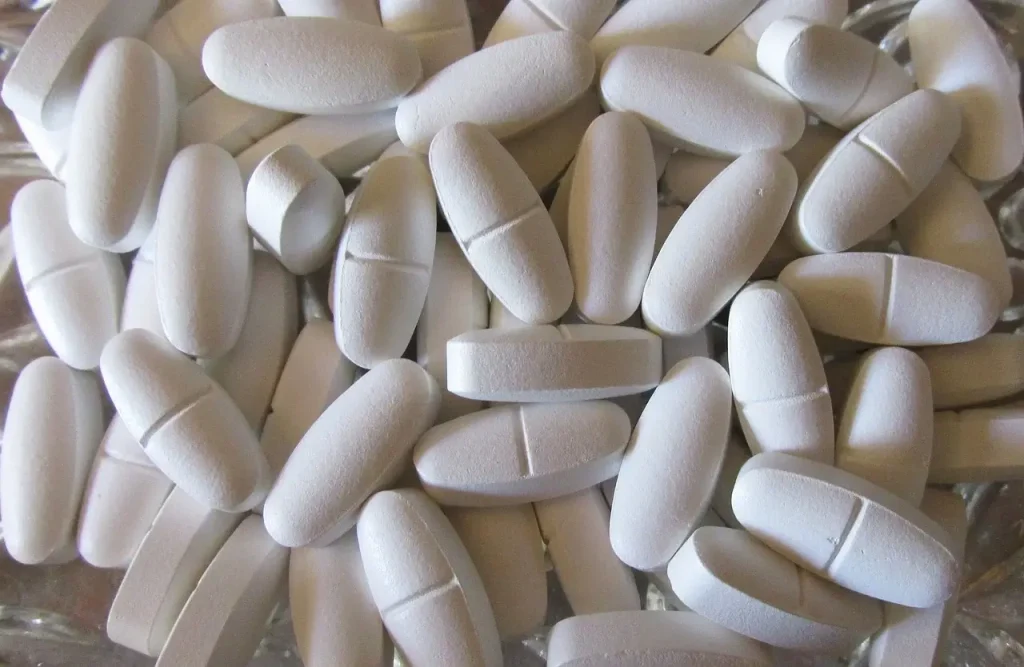Are you looking to improve your joint health, reduce pain, and protect your joints from long-term damage and degradation? If yes, you need to make sure you’re taking correct dosages of joint supplements.
Take too little, and it won’t be effective… take too much, and you’re risking negative side effects.
With so much confusing information out there, it can be difficult to know what is right. I’ve made this guide to make it easier for you to determine the optimal dosage for most of the commonly used joint supplement ingredients.
In the end, I will list some useful resources you can check for other joint supplements that may have not been mentioned in this article.
Let’s dive straight in!
Recommended Dosage for Glucosamine Chondroitin Supplements
Glucosamine and chondroitin are natural joint supplements that help with:
- Delaying the progression of osteoarthritis
- Reducing collagen breakdown and damage to cartilage
- Relieving joint pain and inflammation
- Enhancing joint lubrication and hydration
- Recommended dosage for glucosamine is 1500 mg per day, split into three daily doses.1 If you’re an athlete looking to improve recovery and joint protection from exercise, studies suggest dosages of 2000-3000 mg per day in divided doses.2
- As for chondroitin, the recommended dose is 800-1200 mg per day, either taken once daily, or split into multiple doses during the day.3 4
[Related: Osteoarthritis Relief Through Joint Supplements]
Omega 3 Fatty Acids for Joint Health Dosage
Taking the right dosage of omega-3 can have significant benefits for reducing joint inflammation, alleviating pain, and enhancing your mobility and physical recovery from training.
When talking about omega-3s, EPA and DHA are two most important ones. Their combined dosage is the omega-3 dosage you’re looking at.
With that said, recommended dosage for omega-3 fatty acids for general health purposes is 250 mg per day, which can easily be obtained through the diet.
- While there is no official recommended dosage of omega-3s for joint health specifically, a dosage of 1 g of omega-3s (combined EPA+DHA) per day is recommended by American Heart Association.5 The optimal dosage depends on your unique biology, medical history, and lifestyle.
You should also aim to get omega-3s from whole foods as well, not just supplements. This is because fish oil and other rich omega-3 sources contain additional beneficial compounds that may enhance the anti-inflammatory effect on your joints.
Avoid taking high doses of omega-3s if taking blood thinner or other medications before speaking to your physician, because it can increase the risk of bleeding.

Ideal Dosage of Calcium for Strong Joints
- Calcium is necessary to maintain strong bones and joints, and general recommended dosage for adults is 1,000 mg per day. This dosage should be achieved mainly through dietary sources.
- However, up to 1,200 mg of calcium per day may be needed for menopausal women or other groups of people who’re at risk of being calcium deficient.6
You should consume enough fermentable fiber such as that from vegetables to ensure efficient calcium absorption. Simply taking a calcium supplement while consuming low-fiber diet won’t do you much good.
Vitamin D Supplements Dosage for Joint Pain
Studies show us that low vitamin D levels are linked to joint pain and conditions like rheumatoid arthritis (RA). Vitamin D supplementation may contribute to a reduction in joint pain.7 8 9
One of the ways vitamin D may relieve symptoms of osteoarthritis and pain is by reducing inflammation through an improvement in the immune system function.
Generally, it’s recommended to get your vitamin D through direct sunlight exposure, or through vitamin D sources like salmon and fortified foods. However, for many people, access to direct sunlight for a considerable amount of time is unachievable for most of the year, and foods typically don’t contain enough vitamin D to cover a deficiency.
- The general recommended dosage for vitamin D for adults is currently 400-800 IU per day, but this may be far too low for most adults and those looking to alleviate joint pain. For moderate supplementation, 1000-2000 IU of vitamin D per day is viewed as safe and effective.
- In the USA and Canada, up to 4000 IU of vitamin D per day is considered safe for daily supplementation.10 You should talk with your physician about measuring your vitamin D blood levels to understand how much vitamin D you will need to supplement, and for how long, to mitigate joint pain.
Recommended Boron Supplement Dosage for Joint Care
Boron is a bone-strengthening trace mineral. It has anti-inflammatory and antioxidant benefits that may relieve arthritis symptoms like pain and stiffness.
- Based on the available evidence, the lowest effective supplemental dose of boron seems to be 3 mg per day. Recommended boron dose for joint care is 6 mg per day. Up to 10 mg per day has been shown as safe and effective for reducing inflammation and supporting hormones.11
However, I must note that boron, as a supplement, is still fairly under-researched. It is prudent to stick to lower dosages and see how you react.
Did you know? While boron is found naturally in some foods, the jury is still out on whether it is an essential mineral for our body.
Ideal Dosage for Green Lipped Mussel Capsules
Green Lipped Mussel or Perna Canaliculus is a shellfish with a green shell. It’s native to New Zealand where it’s eaten as well as often used as a supplement. It is shown to have some mild anti-inflammatory properties which may contribute to joint health as well as reducing symptoms of osteoarthritis (OA).
Human studies on Green Lipped Mussel are somewhat scarce, but the ones we do have show promising results from using this shellfish for joint health.
- The optimal dosage is suggested to be between 1-3 g of whole extract powder per day.12

Correct Dosage of Turmeric and Black Pepper for Joints
Turmeric is one of the most potent anti-inflammatory supplements we have today. It even rivals some NSAIDs (non-steroidal anti-inflammatory drugs).
The problem with turmeric is that its main active compound, curcumin, is poorly absorbed in the blood. As a result, you need to take it with a bioavailability enhancer to ensure optimal efficacy and effectiveness.
One such bioavailability enhancer is shown to be black pepper extract, particularly the piperine compound found within black pepper. Pairing them together may significantly boost turmeric’s benefits for your joints.
- The optimal dosage? 500-1500 mg of turmeric extract daily for 3 months, with 5-10 mg of black pepper extract (ideally, a patented version like BioPerine).13 14 15 16
Appropriate Dosage for Boswellia Serrata Capsules
Boswellia Serrata, or Indian Frankincense, might be one of the most effective supplements for joint pain and osteoarthritis symptoms specifically. It not only relieves inflammation at a cellular level (and from multiple angles), it also enhances joint tissue protection and repair.
- The optimal dosage for Boswellia is 2400-3600 mg daily for generic, standard brands. If taking a patented version, such as 5-LoxinTM, AflapinTM, AprèsFLEXTM, you only need 100-250 mg per day since these contain higher concentrations of AKBA, the key active compound in Boswellia Serrata.17
Dosage Instructions for MSM for Optimal Joint Health
MSM, or Methylsulfonylmethane, is a naturally occuring sulfur compound used as a building block for cartilage and other connective tissues. It is anti-oxidant and anti-inflammatory with pain relieving effects.
- The optimal dosage for MSM supplements in the context of joint health and recovery is suggested to be up to 3,000 mg per daily. We lack more human studies to confirm whether lower doses can achieve the same results.18 19
How Much Hyaluronic Acid to Take for Joint Pain
Hyaluronic acid (HA) is one of the few joint supplements that enhances joint lubrication, promoting smooth, pain-free movement. It also has wound healing properties which can help with injury recovery in athletes and active individuals.
Resources
Here are some useful links to websites where you can check for optimal dosages of different supplements:
References
- Williams C, Ampat G. Glucosamine Sulfate. 2023 Jul 22. In: StatPearls [Internet]. Treasure Island (FL): StatPearls Publishing; 2024 Jan–. PMID: 32644356. ↩︎
- Momomura R, Naito K, Igarashi M, Watari T, Terakado A, Oike S, Sakamoto K, Nagaoka I, Kaneko K. Evaluation of the effect of glucosamine administration on biomarkers of cartilage and bone metabolism in bicycle racers. Mol Med Rep. 2013 Mar;7(3):742-6. doi: 10.3892/mmr.2013.1289. Epub 2013 Jan 25. PMID: 23358550. ↩︎
- Bruyère O, Honvo G, Veronese N, Arden NK, Branco J, Curtis EM, Al-Daghri NM, Herrero-Beaumont G, Martel-Pelletier J, Pelletier JP, Rannou F, Rizzoli R, Roth R, Uebelhart D, Cooper C, Reginster JY. An updated algorithm recommendation for the management of knee osteoarthritis from the European Society for Clinical and Economic Aspects of Osteoporosis, Osteoarthritis and Musculoskeletal Diseases (ESCEO). Semin Arthritis Rheum. 2019 Dec;49(3):337-350. doi: 10.1016/j.semarthrit.2019.04.008. Epub 2019 Apr 30. PMID: 31126594. ↩︎
- Bourgeois P, Chales G, Dehais J, Delcambre B, Kuntz JL, Rozenberg S. Efficacy and tolerability of chondroitin sulfate 1200 mg/day vs chondroitin sulfate 3 x 400 mg/day vs placebo. Osteoarthritis Cartilage. 1998 May;6 Suppl A:25-30. doi: 10.1016/s1063-4584(98)80008-3. PMID: 9743816. ↩︎
- https://ods.od.nih.gov/factsheets/Omega3FattyAcids-HealthProfessional/#:~:text=For%20people%20with%20existing%20coronary,of%20a%20physician%20%5B88%5D. ↩︎
- https://ods.od.nih.gov/factsheets/Calcium-HealthProfessional/ ↩︎
- Helde-Frankling M, Björkhem-Bergman L. Vitamin D in Pain Management. Int J Mol Sci. 2017 Oct 18;18(10):2170. doi: 10.3390/ijms18102170. PMID: 29057787; PMCID: PMC5666851. ↩︎
- Laslett LL, Quinn S, Burgess JR, Parameswaran V, Winzenberg TM, Jones G, Ding C. Moderate vitamin D deficiency is associated with changes in knee and hip pain in older adults: a 5-year longitudinal study. Ann Rheum Dis. 2014 Apr;73(4):697-703. doi: 10.1136/annrheumdis-2012-202831. Epub 2013 Apr 17. PMID: 23595144. ↩︎
- Article Source: Serum Vitamin D Level and Rheumatoid Arthritis Disease Activity: Review and Meta-Analysis
Lin J, Liu J, Davies ML, Chen W (2016) Serum Vitamin D Level and Rheumatoid Arthritis Disease Activity: Review and Meta-Analysis. PLOS ONE 11(1): e0146351.https://doi.org/10.1371/journal.pone.0146351 ↩︎ - Vitamin D – Harvard. ↩︎
- Pizzorno L. Nothing Boring About Boron. Integr Med (Encinitas). 2015 Aug;14(4):35-48. PMID: 26770156; PMCID: PMC4712861. ↩︎
- Abshirini M, Coad J, Wolber FM, von Hurst P, Miller MR, Tian HS, Kruger MC. Green-lipped (greenshell™) mussel (Perna canaliculus) extract supplementation in treatment of osteoarthritis: a systematic review. Inflammopharmacology. 2021 Aug;29(4):925-938. doi: 10.1007/s10787-021-00801-2. Epub 2021 Mar 18. PMID: 33738701; PMCID: PMC8298224. ↩︎
- Chandan S, Mohan BP, Chandan OC, Ahmad R, Challa A, Tummala H, Singh S, Dhawan P, Ponnada S, Singh AB, Adler DG. Curcumin use in ulcerative colitis: is it ready for prime time? A systematic review and meta-analysis of clinical trials. Ann Gastroenterol. 2020 Jan-Feb;33(1):53-58. doi: 10.20524/aog.2019.0439. Epub 2019 Nov 29. PMID: 31892798; PMCID: PMC6928475. ↩︎
- Hercz D, Jiang SH, Webster AC. Interventions for itch in people with advanced chronic kidney disease. Cochrane Database Syst Rev. 2020 Dec 7;12(12):CD011393. doi: 10.1002/14651858.CD011393.pub2. PMID: 33283264; PMCID: PMC8094883. ↩︎
- Zeng L, Yu G, Hao W, Yang K, Chen H. The efficacy and safety of Curcuma longa extract and curcumin supplements on osteoarthritis: a systematic review and meta-analysis. Biosci Rep. 2021 Jun 25;41(6):BSR20210817. doi: 10.1042/BSR20210817. PMID: 34017975; PMCID: PMC8202067. ↩︎
- Hewlings SJ, Kalman DS. Curcumin: A Review of Its Effects on Human Health. Foods. 2017 Oct 22;6(10):92. doi: 10.3390/foods6100092. PMID: 29065496; PMCID: PMC5664031. ↩︎
- https://examine.com/supplements/boswellia/#dosage-information ↩︎
- Butawan M, Benjamin RL, Bloomer RJ. Methylsulfonylmethane: Applications and Safety of a Novel Dietary Supplement. Nutrients. 2017 Mar 16;9(3):290. doi: 10.3390/nu9030290. PMID: 28300758; PMCID: PMC5372953. ↩︎
- Kalman DS, Feldman S, Scheinberg AR, Krieger DR, Bloomer RJ. Influence of methylsulfonylmethane on markers of exercise recovery and performance in healthy men: a pilot study. J Int Soc Sports Nutr. 2012 Sep 27;9(1):46. doi: 10.1186/1550-2783-9-46. PMID: 23013531; PMCID: PMC3507661. ↩︎
- Oe M, Tashiro T, Yoshida H, Nishiyama H, Masuda Y, Maruyama K, Koikeda T, Maruya R, Fukui N. Oral hyaluronan relieves knee pain: a review. Nutr J. 2016 Jan 27;15:11. doi: 10.1186/s12937-016-0128-2. PMID: 26818459; PMCID: PMC4729158. ↩︎
- https://examine.com/supplements/hyaluronic-acid/ ↩︎

Leave a Reply